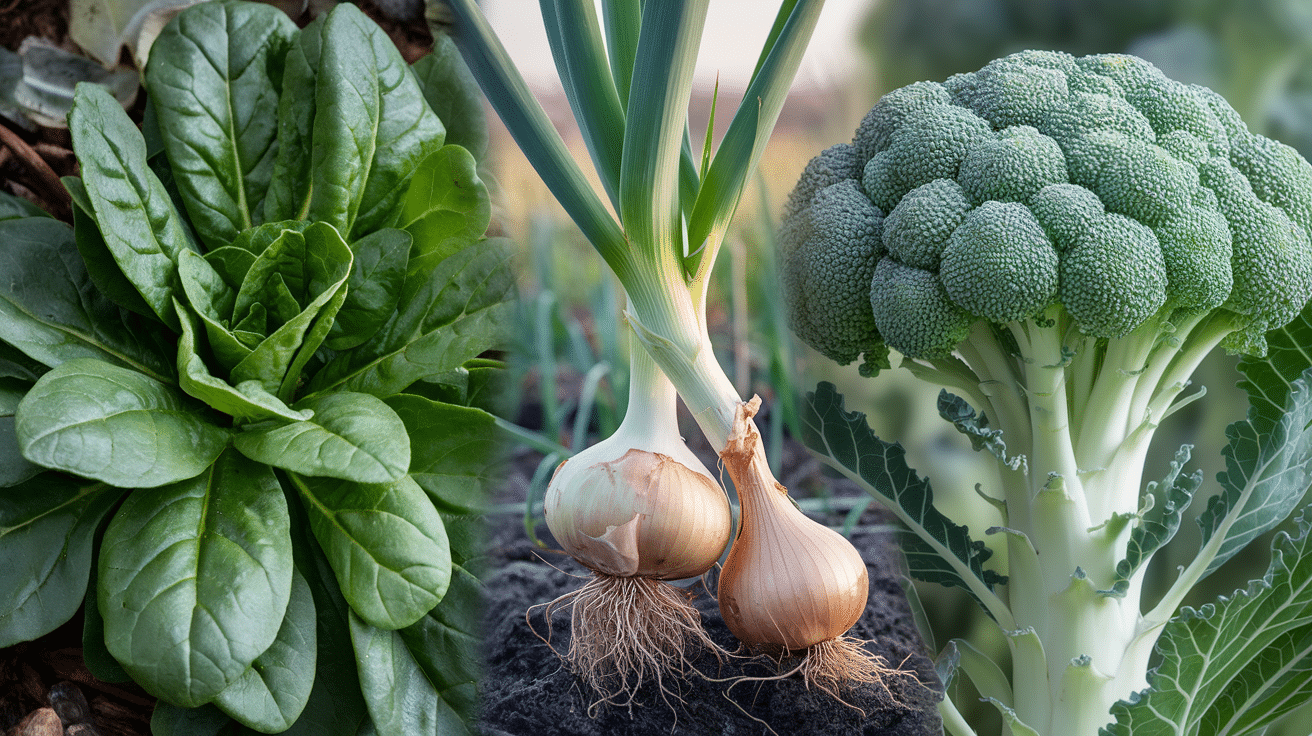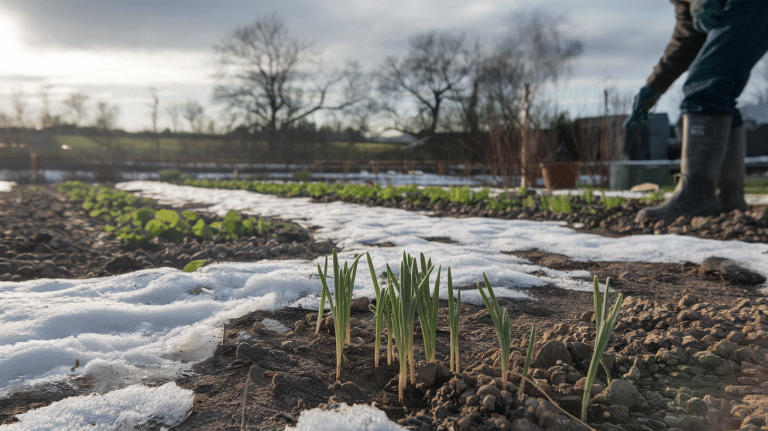Winter has a sneaky way of playing tricks on gardeners. Just when you think spring has arrived, cold temperatures can return and catch you off guard.
Fool’s spring is that magical, yet frustrating moment when warmth briefly breaks through winter’s grip, only to disappear just as quickly.
For cold-climate gardeners, this weather pattern means constant vigilance. Your seeds are ready. The ground feels warm. Hope springs up like the first green shoots. But patience is key.
This guide will help you understand these tricky temperature shifts, protect your plants, and set yourself up for gardening success.
What Exactly is Fool’s Spring?
Nature plays a clever trick during fool’s spring. Warm sunshine breaks through winter’s cold barrier, melting snow and coaxing plant buds to peek out.
Temperatures climb, creating a false sense that spring has arrived. Yet this warmth is just a temporary guest, with winter waiting to return.
During this brief window, the landscape shifts dramatically. The ground softens. Trees hint at new growth.
Early flowers might tentatively show their colors. But experienced gardeners know better. This warm spell is fragile, lasting only a short time before cold air sweeps back, ready to catch everything off guard.
For gardeners, fool’s spring demands careful watching. Temperature changes can happen quickly – from mild and promising to freezing and harsh in just hours or days.
Young plants remain vulnerable, making this a critical time for garden protection and strategic planning.
Understanding the Weather Patterns
Winter’s last weeks are a weather rollercoaster. In cold regions, spring’s arrival isn’t a smooth transition but a complex dance of temperature changes.
Warm southern winds battle against cold arctic air, creating dramatic shifts that challenge local gardeners.
These temperature swings can bring sudden warmth followed by quick returns to freezing conditions.
A 50°F day might melt snow and hint at spring, only to be replaced by frost the next morning. The jet stream’s movement allows brief windows of warmth, tricking both plants and gardeners into thinking winter has ended.
For cold-climate gardeners, the key is patience. Watch for consistent temperature trends, not just a few warm days.
Track local weather reports and ground temperatures carefully. Success comes from understanding nature’s unpredictable spring rhythm.
Impact on Gardening Efforts
The risks of fool’s spring are significant for gardeners. Plants that begin to bud or sprout during this warm spell are vulnerable to sudden temperature drops.
Tender seedlings, early-blooming perennials, and young vegetable starts can suffer severe damage or complete loss if exposed to unexpected frost.
Cold Climate Planting Guidelines
When gardening in cold regions, timing is everything. Here are some key guidelines:
- Wait at least two weeks after the last expected frost date before planting sensitive crops
- Check local agricultural extension offices for specific planting calendars
- Monitor long-term weather forecasts carefully
- Keep an eye on overnight temperatures, not just daytime highs
Frost-Tolerant Plants for Cold Regions

Some plants are champions at surviving cold weather, making them ideal for gardens that face unpredictable spring temperatures.
Here are seven robust crops that laugh in the face of frost:
- Kale: A nutritional powerhouse that actually tastes sweeter after a light frost, kale thrives in temperatures as low as 28°F. Its thick, curly leaves can withstand cold snaps that would make other plants wither.
- Spinach: This leafy green is incredibly resilient, growing well in cool soil and tolerating temperatures down to 30°F. It’s a quick-growing crop that provides early-season nutrients.
- Broccoli: A cold-weather superhero that can handle temperatures around 28-32°F. Its compact heads continue to grow even when other plants would struggle.
- Cabbage: With its thick, protective leaves, cabbage is a cold-climate gardener’s best friend. It can survive temperatures as low as 25°F and keeps producing through chilly conditions.
- Carrots: These root vegetables actually improve in flavor after a light frost, becoming sweeter as the cold triggers sugar production in the plant.
- Peas: Early-season peas are remarkably tough, germinating in cool soil and continuing to grow at temperatures around 28-32°F.
- Onions: These hardy bulbs can be planted early and tolerate cold temperatures, making them perfect for gardeners eager to start their season.
These crops can withstand temperatures as low as 28-32°F and continue growing even during chilly conditions.
Protecting Your Plants During Unexpected Cold Snaps
Cold-climate gardeners know that preparation is key when the weather turns tricky.
Your garden needs a shield against sudden temperature drops during those false spring moments.
Smart gardeners keep lightweight frost cloths and old bed sheets within easy reach to cover tender plants quickly. Plastic covers and makeshift plant protectors can create a temporary barrier against cold winds.
If you have potted plants, moving them to indoor spaces or protected areas can prevent frost damage.
Creating small temporary greenhouses with clear plastic and wooden stakes offers an extra layer of protection.
An often-forgotten trick is watering plants in the evening – moist soil holds heat better and helps plants withstand chilly nights.
Hardening Off Plants Strategically
| Day | Action | Duration | Tips |
|---|---|---|---|
| 1-2 | Initial Outdoor Introduction | 1-2 hours | Place plants in shaded, wind-protected areas |
| 3-4 | Gradual Sun Exposure | 2-3 hours | Move to a spot with morning sunlight |
| 5-6 | Extended Outdoor Time | 4-5 hours | Increase sun and wind exposure slowly |
| 7-8 | Almost Full Exposure | 6-7 hours | Monitor plant response closely |
| 9-10 | Full Outdoor Readiness | Full day | Bring inside if temperatures drop |
Key Points to Remember:
- Watch for wilting or color changes
- Protect from strong winds
- Avoid direct, harsh sunlight initially
- Check the weather forecast regularly
- Return plants indoors during cold snaps
Long-Term Cold Climate Gardening Strategies
Successful cold-climate gardening requires creative thinking and smart strategies.
Raised garden beds offer a practical solution by warming soil faster and providing better drainage during unpredictable spring conditions.
Cold frames and small greenhouses can significantly extend your growing season, protecting plants from sudden temperature shifts.
Smart gardeners select plant varieties specifically adapted to their local climate, increasing the chances of a thriving garden.
By creating protective microclimates using strategic windbreaks and thermal mass from stone features, you can give your plants a fighting chance against harsh weather conditions.
Conclusion
Cold climate gardening takes patience but brings special rewards.
We’ve shared practical tips throughout this blog to help your garden succeed despite frosty challenges.
You’ve learned about soil preparation, plant selection, and timing—all crucial elements for northern gardens.
The satisfaction of growing in cold regions comes from working alongside nature, not against it. Your garden becomes a source of joy and food, even when temperatures drop.
Remember that mistakes are normal and part of learning. Each season brings new wisdom.
Keep these suggestions close as you tend your cold-weather garden. With the right knowledge and a bit of flexibility, your garden will provide beauty and abundance through the changing seasons. Happy gardening!













